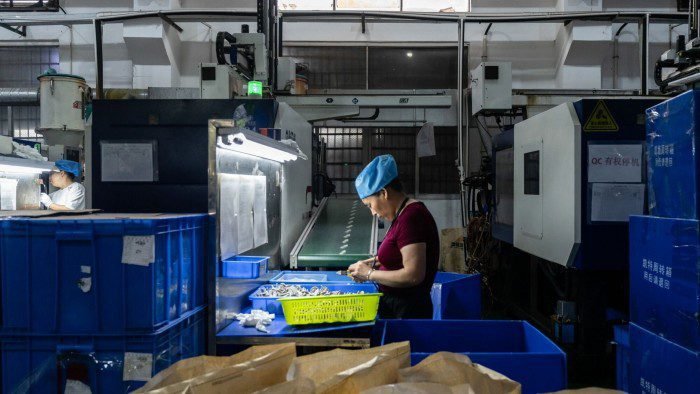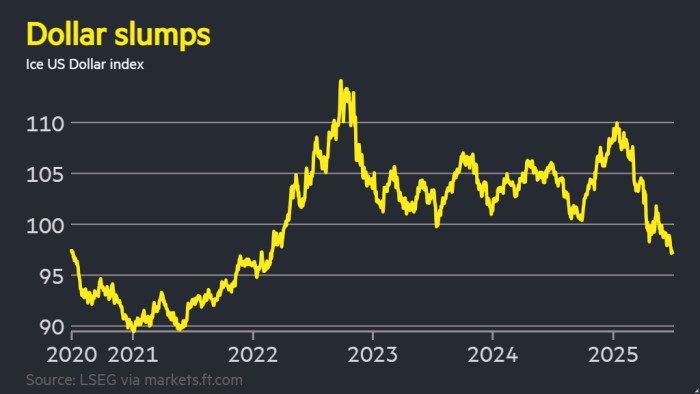Stay informed with free updates
Simply sign up to the Chinese economy myFT Digest — delivered directly to your inbox.
Chinese manufacturing activity contracted for the third straight month in June, according to official data, highlighting pressure on policymakers to boost domestic demand after a fragile trade truce with the US.
The manufacturing purchasing managers’ index stood at 49.7 in June, data from the National Bureau of Statistics showed on Monday, an improvement on May’s reading of 49.5 but still below the 50-mark that separates expansion from contraction.
China’s manufacturing PMIs — a monthly survey that provides an early glimpse of economic activity — turned negative in April as an escalating trade war with the US drove tariffs to levels as high as 145 per cent.
A truce signed last week between Washington and Beijing reduced those levies, but the world’s second-largest economy is still facing an uncertain trade outlook as it battles to improve consumer demand in the shadow of a property slowdown and deflation.
Consumer price growth in China has declined for four consecutive months to May. “The bigger reflection is domestic demand,” said Dan Wang, China director at the Eurasia Group. “Deflation in China is deepening, the price war across sectors is intensifying”.
Exports to the US in May fell by the most since the start of the coronavirus pandemic, though overall exports, a critical growth driver given weakness in the property sector, continued to rise.
The PMI data showed some signs of improvement. The figure for new export orders was 47.7 in June, still in contraction territory but significantly above April, when they fell to the lowest level since late 2022.
Zichun Huang, China economist at Capital Economics, said export orders were likely to be “reflecting a rebound in US demand after the US-China trade truce”. A 90-day pause on US tariffs on dozens of other countries will also expire on Wednesday next week.
Retail sales in China unexpectedly jumped in May, according to NBS data, but concerns over consumer demand continue to drive expectations of stimulus. Authorities have cut rates repeatedly and sought to boost confidence in a housing sector, where house prices are still falling and signs of a recovery lost ground in May.
“Policymakers [are likely to wait] and monitor the development of [the] trade war,” said Zhiwei Zhang, chief economist at Pinpoint Asset Management, pointing to improvements in exports. “Deflationary pressure is persistent and the labour market is under stress,” he added.
The non-manufacturing PMI was 50.5 in June, up from 50.3 a month earlier. The overall level was boosted by a rise in the construction PMI, which hit 52.8. Composite PMI across manufacturing and services was 50.7.
Huang said that composite PMI in the second quarter was still below that of the first quarter.
“This is consistent with a quarter-on-quarter slowdown in GDP growth,” she said. “We doubt the second half of the year will be much better, with weaker exports and reduced fiscal support likely weighing on momentum”.


